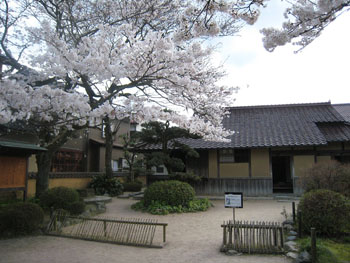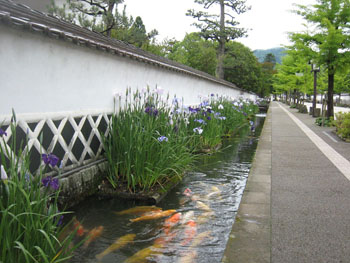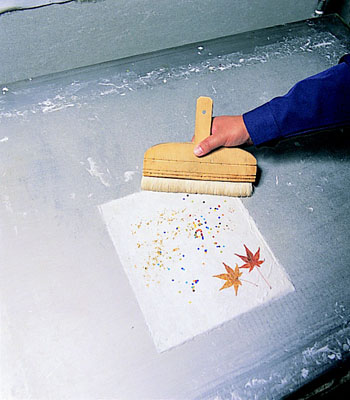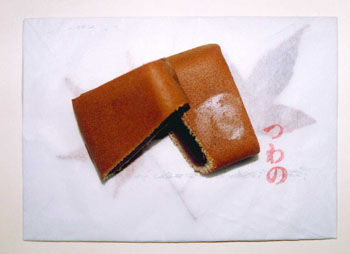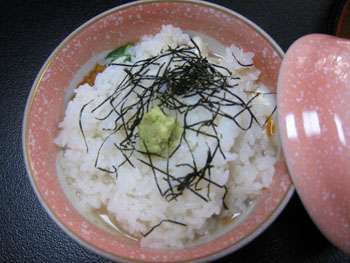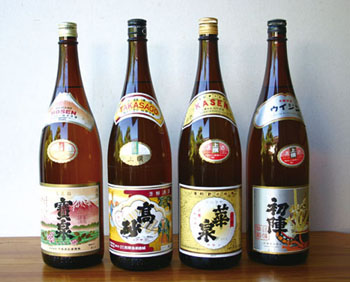Tsuwano
Nostalgic Old Town
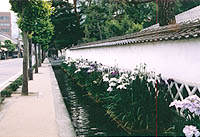 Tsuwano has long been known as a Little Kyoto in San-in, the area of which Shimane Prefecture is a part, and lies in the southwestern part of the prefecture with approx. 8,000 inhabitants. More than 1,000 houses were once concentrated in the town’s small central area clustered around the castle. With the Nishiki River (aka Tsuwano River), Mt. Aono to the east and Mt. Shiro to the west, Tsuwano is set amongst magnificent natural surroundings. The first lord who governed the area was Yoriyuki Yoshimi whose governance started about 700 years ago. The Yoshimi Family ruled for the next 14 generations and then the Sakazaki Family took over for just 16 years. After this, the Kamei Family came and settled in the castle for the next 11 generations.
Tsuwano has long been known as a Little Kyoto in San-in, the area of which Shimane Prefecture is a part, and lies in the southwestern part of the prefecture with approx. 8,000 inhabitants. More than 1,000 houses were once concentrated in the town’s small central area clustered around the castle. With the Nishiki River (aka Tsuwano River), Mt. Aono to the east and Mt. Shiro to the west, Tsuwano is set amongst magnificent natural surroundings. The first lord who governed the area was Yoriyuki Yoshimi whose governance started about 700 years ago. The Yoshimi Family ruled for the next 14 generations and then the Sakazaki Family took over for just 16 years. After this, the Kamei Family came and settled in the castle for the next 11 generations.
Sightseeing Highlights in Tsuwano
Yomei-ji Temple
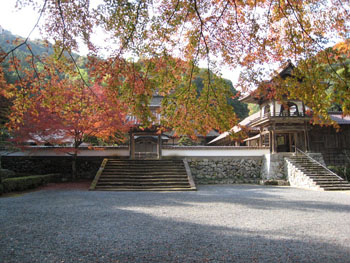 Here can be found the graves of a number of famous people including the Sakazaki Dewa-no Kami and Ogai Mori, a famous author.
Here can be found the graves of a number of famous people including the Sakazaki Dewa-no Kami and Ogai Mori, a famous author.
Old Site of Tsuwano Castle
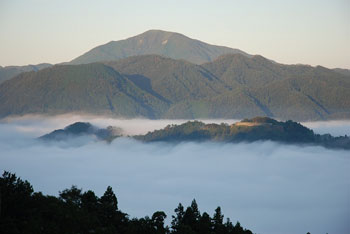 Commanding a fine view of the whole town; cherry blossoms in spring and colored leaves for autumn.
Commanding a fine view of the whole town; cherry blossoms in spring and colored leaves for autumn.
Taikodani Inari Shrine
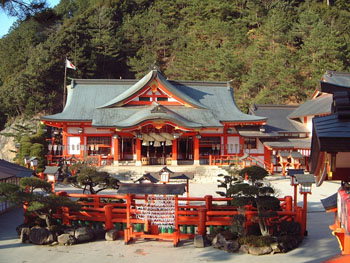 One of the five most important sub-shrines of the Inari Shrines in Japan. Widely worshipped by the people as the deity of good luck.
One of the five most important sub-shrines of the Inari Shrines in Japan. Widely worshipped by the people as the deity of good luck.
Important Annual Events in Tsuwano
New Year’s Day Festival
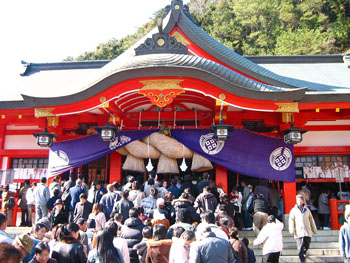 The first ceremony of the year to pray for safety in the coming new year. A large number of people from around western Japan come for their first shrine visit of the year.
The first ceremony of the year to pray for safety in the coming new year. A large number of people from around western Japan come for their first shrine visit of the year.
Washihara Hachiman-gu Shrine Grand Festival (Yabusame Ritual)
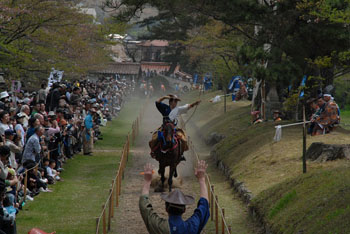 Under the fully blooming cherry blossoms, a traditional Yabusame (acrobatic horse riding skills in which a rider shoot arrows from the back of the running horse) in the Ogasawara style will be performed.
Under the fully blooming cherry blossoms, a traditional Yabusame (acrobatic horse riding skills in which a rider shoot arrows from the back of the running horse) in the Ogasawara style will be performed.
Otome-toge Festival
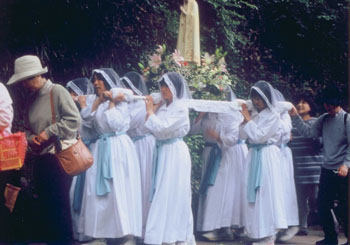 A procession of Christians starts from a church in the Tono-machi area heading to Otome-toge. A mass is held outside the St. Mary’s Chapel.
A procession of Christians starts from a church in the Tono-machi area heading to Otome-toge. A mass is held outside the St. Mary’s Chapel.
Inari Shrine Spring Grand Festival
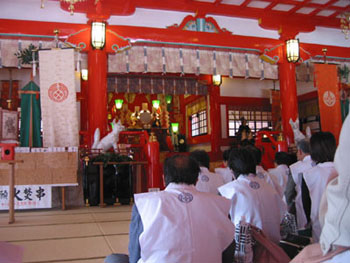 A large spring festival in which people pray for a good harvest and business luck.
A large spring festival in which people pray for a good harvest and business luck.
Hotaru Bus
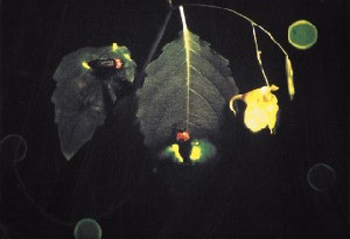 Spectacular dance of Japanese fireflies will entertain visitors.
Spectacular dance of Japanese fireflies will entertain visitors.
Gion Festival (Sagi-mai Dance Ritual)
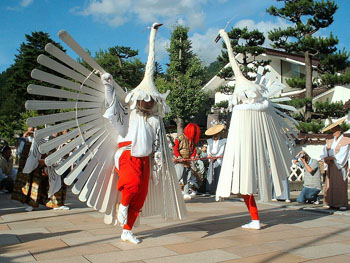 Sagi-mai is a traditional dance which has been designated as a National Intangible Important Cultural Property. The dance will be performed at several places in the town. The children’s dance is very cute.
Sagi-mai is a traditional dance which has been designated as a National Intangible Important Cultural Property. The dance will be performed at several places in the town. The children’s dance is very cute.
Tono-machi Bon Dance Festival
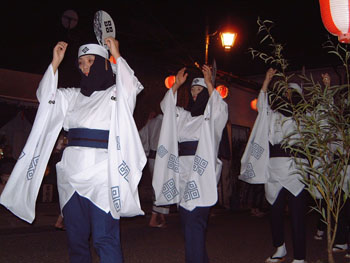 Tsuwano Odori, a traditional dance designated as an Intangible Important Cultural Property, is one of the Nenbutsu dances (Buddhist dance and chanting) which have been passed on since the Muromachi period.
Tsuwano Odori, a traditional dance designated as an Intangible Important Cultural Property, is one of the Nenbutsu dances (Buddhist dance and chanting) which have been passed on since the Muromachi period.
Imo-ni & Local Sake Gathering
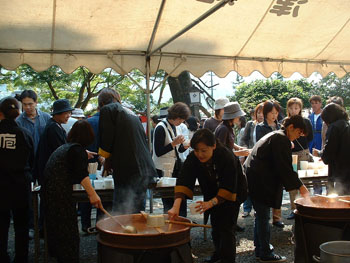 Imo-ni is a hotpot dish which uses Japanese taro (a kind of potato). People enjoy hot Imo-ni and local sake together.
Imo-ni is a hotpot dish which uses Japanese taro (a kind of potato). People enjoy hot Imo-ni and local sake together.
Inari Shrine Autumn Grand Festival
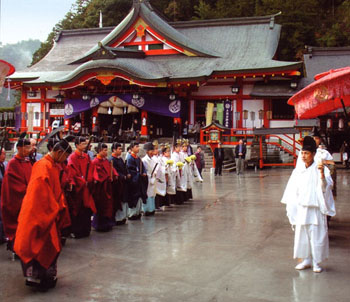 One of the five major Inari shrines in Japan, the Taishogaya Inari Shrine will hold its Autumn Grand Festival.
One of the five major Inari shrines in Japan, the Taishogaya Inari Shrine will hold its Autumn Grand Festival.
The shrine, famous for its tunnel-like red torii gates, is crowded with visitors who come to pray for a good harvest and prosperous business.
Local children parade "kodomo mikoshi" (children's portable shrines) through the area with their energetic and lively voices, and stalls line the Omotesando approach to the shrine from Tonomachi.
Traditional Crafts of Tsuwano
Food & Specialties of Tsuwano
Imo-ni
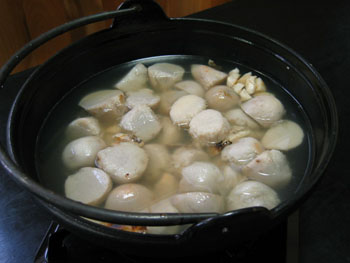 Sato-imo (Japanese taro; a kind of potato) grown in the volcanic ashes are cooked in a large pot with grilled sea bream. One of the three most famous Imo-ni in Japan.
Sato-imo (Japanese taro; a kind of potato) grown in the volcanic ashes are cooked in a large pot with grilled sea bream. One of the three most famous Imo-ni in Japan.
- Access
- Tsuwano Station on JR Yamaguchi Line
- Contact
- Tsuwano Town Tourism Association
- TEL:0856-72-1771 / FAX:0856-72-1191
- E-mail: tsuwanok@tsuwano-kanko.net
- URL: http://www.tsuwano-kanko.net

